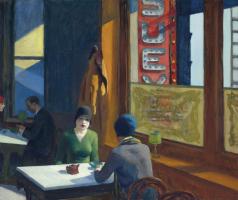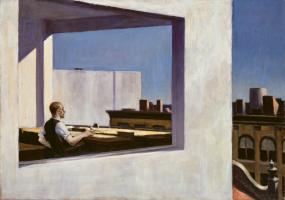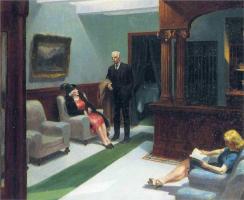Edward Hopper
Edward Hopper was one of the pioneers of twentieth-century American realism. He painted scenes from the country of New England and the city of New York: backwater scenes — old shabby houses, a few people waiting at a cinema, a street early on a Sunday morning or a lonely garage at dusk on a country road. He painted an America of loneliness and isolation, whose citizens lead lives of spiritual poverty, and he found a sad, touching beauty in their desperation.
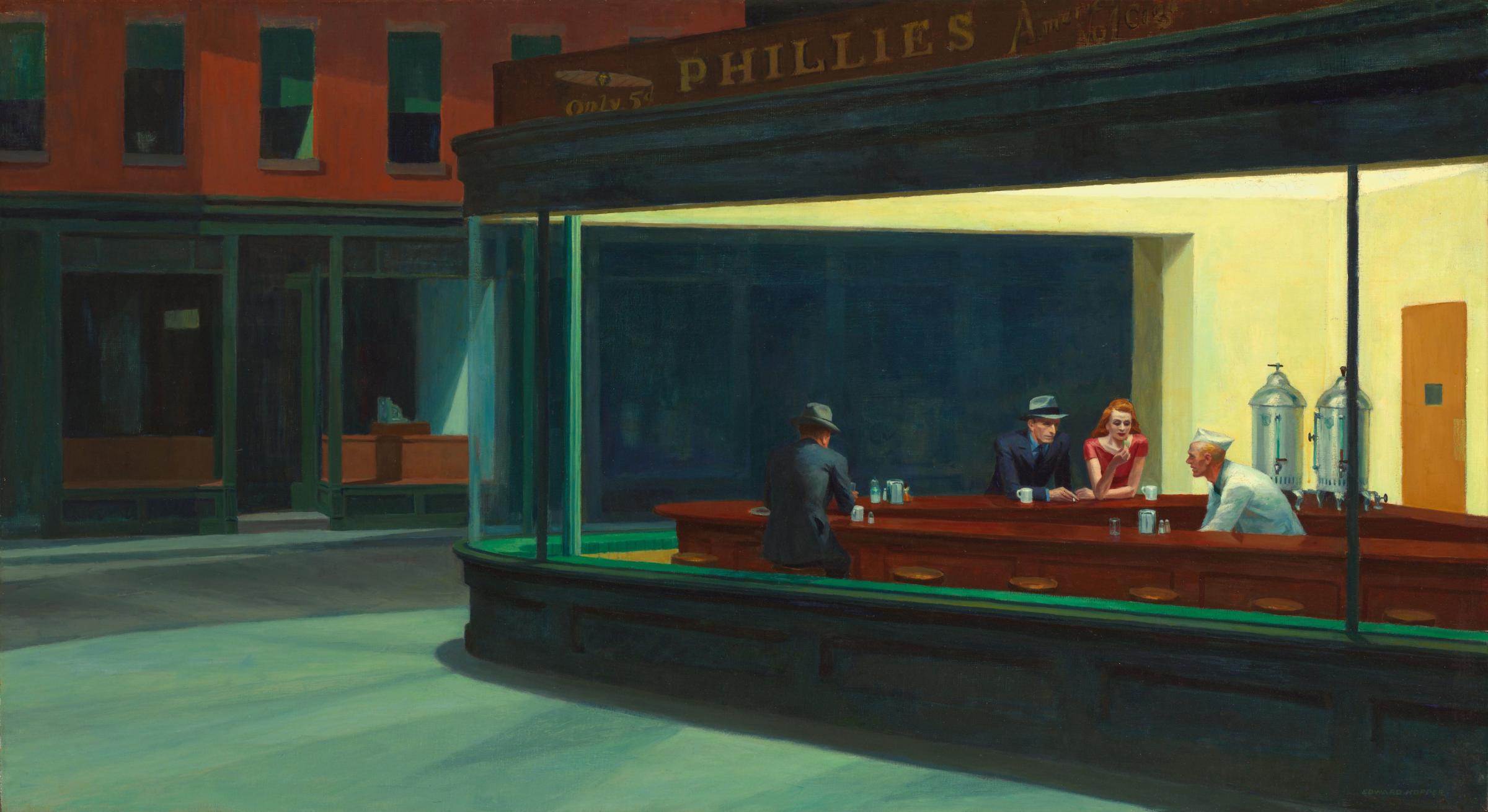 The city scene Nighthawks is filled with the atmosphere of depression and
anxiety at the start of the Second World War. The clothes of the people at the
all-night ‘lunch counter’ and the lettering outside, as well as the mood of the
painting, are strongly evocative of the 1930s and early 40s. The upper windows
have their blinds halfway down, the windows of the shops are bare, and the city
is silent. A harsh fluorescent light ruthlessly exposes the small group of
people as though they are on a stage, and floods through the glass walls on to
an empty street, its effect heightened by the surrounding darkness.
The city scene Nighthawks is filled with the atmosphere of depression and
anxiety at the start of the Second World War. The clothes of the people at the
all-night ‘lunch counter’ and the lettering outside, as well as the mood of the
painting, are strongly evocative of the 1930s and early 40s. The upper windows
have their blinds halfway down, the windows of the shops are bare, and the city
is silent. A harsh fluorescent light ruthlessly exposes the small group of
people as though they are on a stage, and floods through the glass walls on to
an empty street, its effect heightened by the surrounding darkness.
A man is seated with his back towards us, a little hunched up, as though he is drawing comfort from a drink in front of him. A couple wait to be served; they are together, but they appear to have little to say to one another. Hopper’s people are passive; they seem resigned and desolate, unable or unwilling to communicate. The hard light gleams on two large metal coffee urns, making them look strangely dramatic and menacing.
The paint is applied quite thickly, and the intense, bitter colours reflect the glare. The composition is made up of simple, stark horizontal and vertical shapes, which emphasize the bleakness of the environment, and make the people seem more vulnerable.
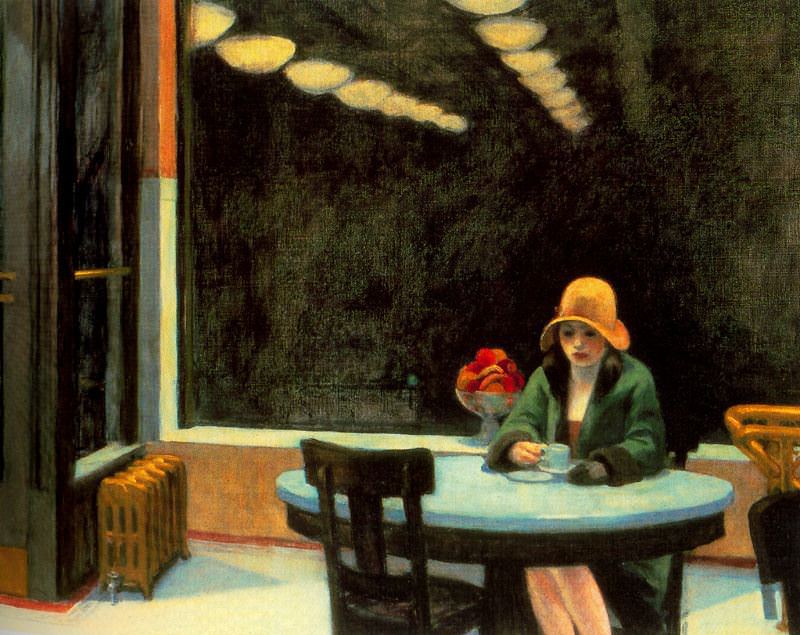 Hopper thought of his art as intimate transcriptions from nature, and he
denied any social message or purpose, but he conveys through his paintings such
a deep understanding of human isolation that we can identify with this silent
group.
Hopper thought of his art as intimate transcriptions from nature, and he
denied any social message or purpose, but he conveys through his paintings such
a deep understanding of human isolation that we can identify with this silent
group.
A woman sits alone with a cup of coffee. We can only guess if the empty chair opposite means that she is expecting someone, or indeed would welcome the arrival of anyone at all. Placing her in an alienating environment where people connect only with vending machines, Hopper makes use of distance and detachment — painted and imaginary — to create a situation where the viewer supposes the consequences.


